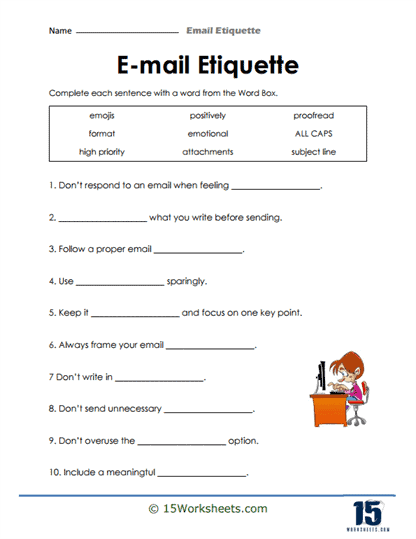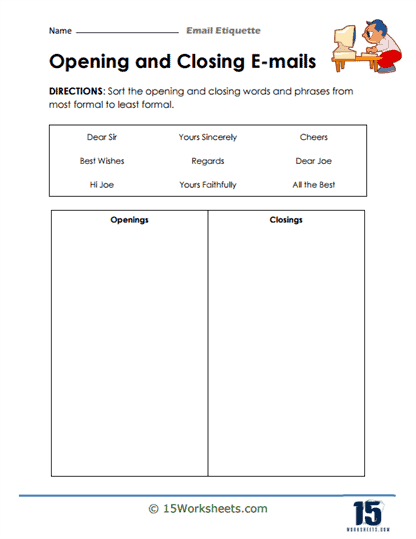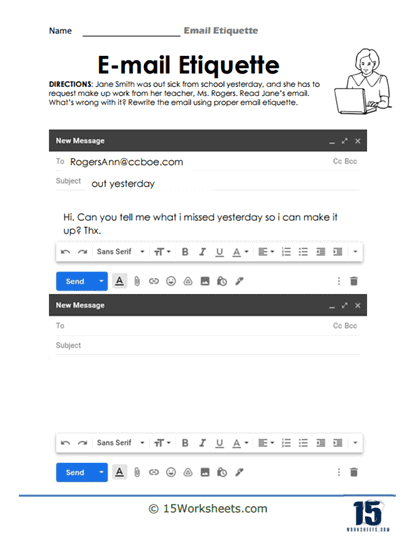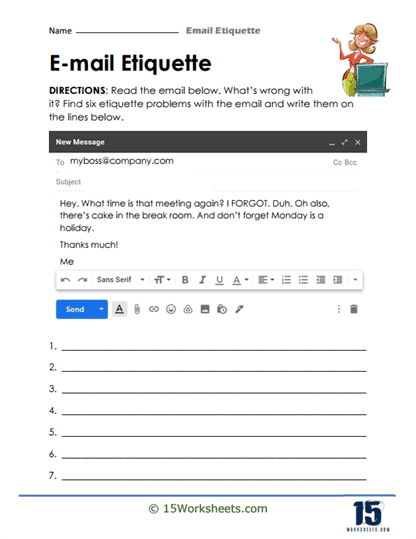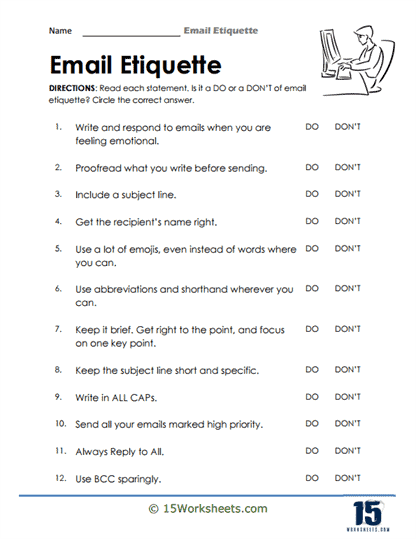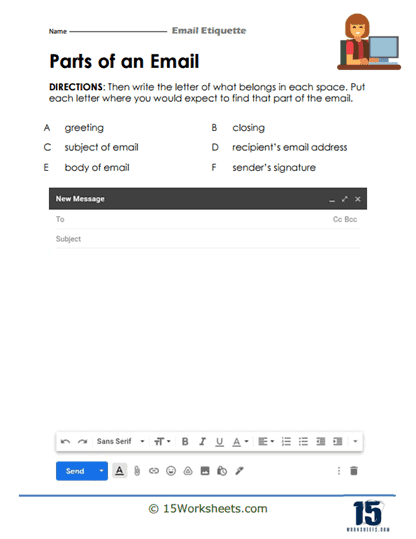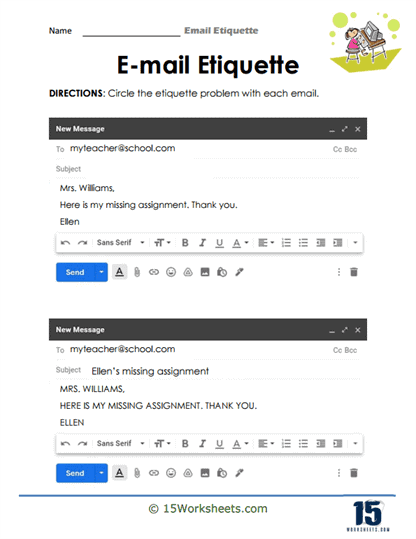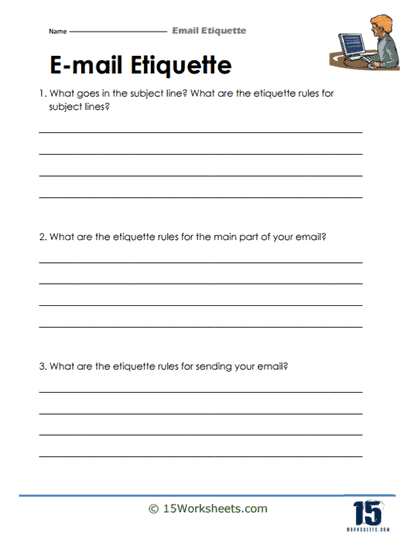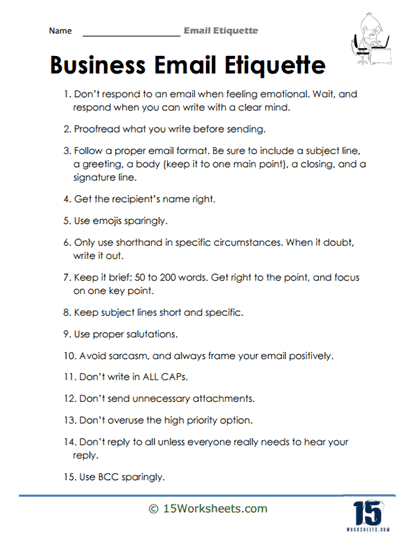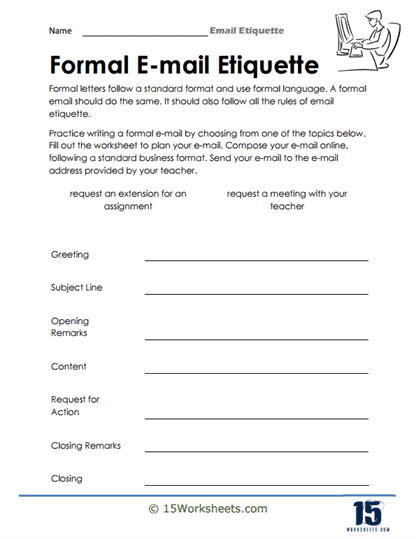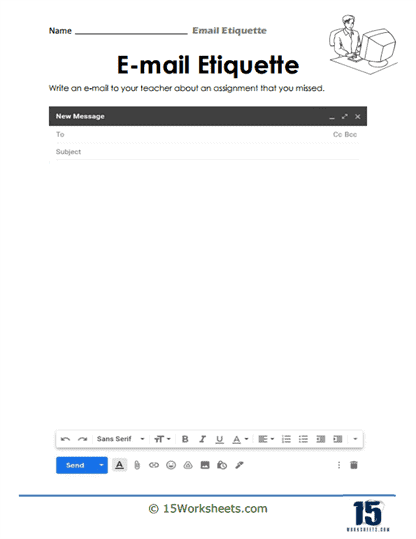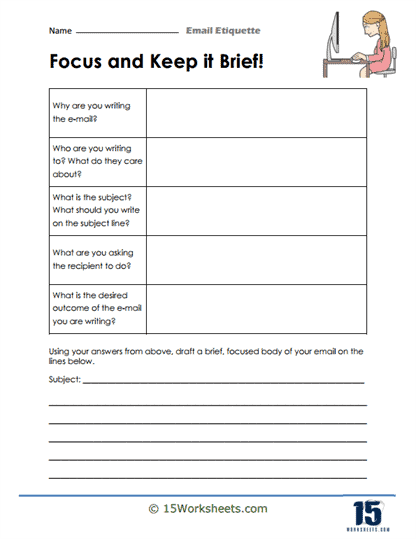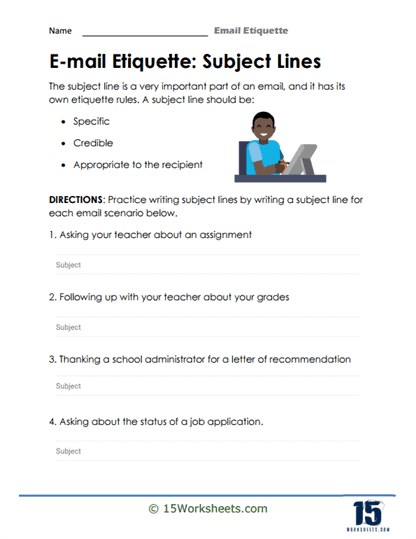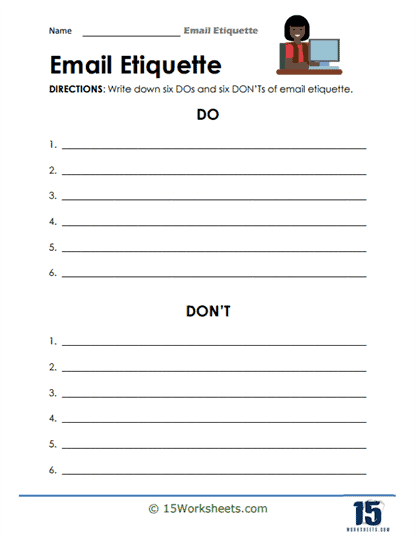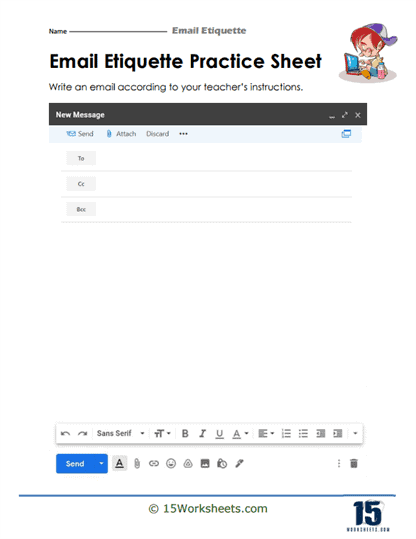Email Etiquette Worksheets
All About These 15 Worksheets
This series of 15 worksheets focuses on teaching students the essential skills and principles of effective email etiquette. As email has become a primary mode of communication in both academic and professional settings, it is crucial for students to develop proficiency in crafting professional, concise, and respectful emails. These worksheets provide structured practice to help students understand the nuances of email communication and develop the necessary skills for successful and polished correspondence. Through these worksheets, students will:
- Learn vocabulary words related to email correspondence;
- Distinguish opening and closing words or phrases from each other;
- Rewrite poorly formatted emails to adhere to professional standards;
- Identify etiquette mistakes;
- Understand the parts of an email and the significance of subject lines;
- Learn proper business email etiquette;
- Write their own emails using hypothetical scenarios while observing proper email etiquette;
- And learn to adapt their email communication based on the intended audience and purpose.
Overall, this series of Email Etiquette worksheets equips students with the essential skills and knowledge to excel in email communication. By mastering email etiquette, students can effectively convey their messages, build positive professional relationships, and make a lasting impression.
These worksheets offer a comprehensive approach to understanding email structure, formatting, clarity, and professionalism. With consistent practice and application of these principles, students will develop the confidence and competence needed to navigate email communication in academic, personal, and professional settings.
What are The Basic Rules of Email Etiquette?
Are you always anxious about writing emails? Do you find errors in your emails after you have sent them? A US citizen uses his email account for approximately 25% of the time he works in a week. There is no denying the fact that the importance of email has increased in the last two decades, and it has replaced all other communication services as the most trusted and official network.
You may be a student addressing your instructor or supervisor or an employee communicating with the office members or higher-ups; you must know how to write a perfect email.
There are some basic rules of email etiquette which we should follow diligently to maintain the boundaries of our relationship in the practical world. As for students, they need to start using these etiquettes to become well-versed by the time they step into their careers.
To help you write a perfect email, we have listed some basic rules to follow and pointed out some recurring mistakes to avoid.
The Basic Rules of Email Etiquette
Describe The Main Idea In The Subject
Instead of sending emails with vague subject heads, sending to-the-point messages in the subject line is always good. For example, you should write “meeting of finance heads on 2/07/22 at 3 PM” instead of “meeting on 2/07/22.” It is common knowledge that the recipient opens the email after studying the subject line, so it should be strong and attention-grabbing.
Use a Professional Email ID
If you still use the email ID that you made in 8th grade, which says: jUlezisscoolz@hotmail.com, to address your professor or your boss, it will surely make a non-serious and bad impression on you the other person. Only use your email provided to you by the organization where you work to communicate with colleagues, and a personal email that should be your full name only, such as marywhitney@whichever service handle you prefer.
Add a Signature to Your Email
You might have received emails with a sign-off with the sender’s name, his electronic signature, where he works, and his current position. It not only looks professional, but it increases your ROIs in the market.
Proofread Your Email
Just like you proofread all your work, it is important to reread the email you have written before sending it. There must be a typo, an extra exclamation mark, a forgotten comma, or a full stop. It would help if you understood that such errors might be small but negatively impact the recipient. Also, do not add the recipient’s email address until you have completed the email because, by mistake, if you click on send and the email is sent, there is no un-send button.
Use Professional Greetings and Tone
If you are using a work email, then always beware of the kind of language you use in the email. It must be professional and if you think of adding humor to it, then make sure it doesn’t hurt the other person or is considered prohibited in the work ethics laid by the office. Never use “Hi There” as a salutation in email; always end it with “regards.”
Read All Your Emails
It is mandatory and expected of you to regularly check your emails and reply to all of them unless it is asked not to do. Sometimes there are emails in the junk box or spam from clients whom the apps might not recognize as important, so it is considered one of the basic rules of email etiquette to check these.

